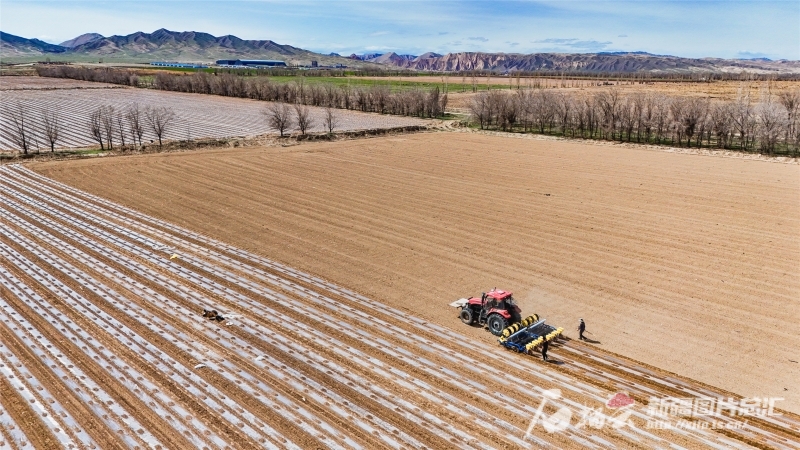Shiliuyun-Xinjiang Daily (Reporter Liu Yi) news: On April 16, 2024, the reporter learned from the Department of Agriculture and Rural Affairs of Xinjiang Uygur Autonomous Region that with the continuous rise in temperature, major crops such as grain and cotton in Xinjiang have entered a large-scale sowing period. According to agricultural data, Xinjiang has completed planting more than 1.07 million hectares of crops, with a spring sowing progress of 20 percent, which is basically the same as the same period in 2023.

Photo taken on April 11, 2024 shows a cotton planter works at the cotton field in Dafeng Town of Hutubi County in Changji Hui Autonomous Prefecture, northwest China's Xinjiang Uygur Autonomous Region. (Photo by Tao Weiming)
Recently, various regions in Xinjiang have been seizing the opportunity to promote spring sowing and field management, consolidating the foundation for a bountiful agricultural harvest throughout the year. From a regional perspective, spring wheat in eastern and northern Xinjiang began to be sown on a large scale, while corn and cotton began to be sown in some areas. Cotton and corn began to be sown on a large scale in Aksu Prefecture and Kashi Prefecture in southern Xinjiang, while others began to be sown one after another.
Wheat, corn, and cotton are the main spring sowing crops in Xinjiang. More than 73,333 hectares of spring wheat have been sown in Xinjiang, accounting for nearly half of the planting plan. More than 0.13 million hectares of corn have been sown, accounting for nearly 10 percent of the planting plan. Meanwhile, Xinjiang has completed over 0.6 million hectares of cotton planting, accounting for 25 percent of the intended planting plan. In addition, the sowing work of crops such as oil plants, vegetables, and fruits is also being carried out as scheduled, and the progress is basically the same as last year.
This spring, frequent precipitation and strong winds affected the planting of grain crops in northern Xinjiang to a certain extent. And currently, it is in the jointing and booting period of winter wheat in southern Xinjiang, and the jointing period of winter wheat in northern Xinjiang. The implementation of various field management measures is of great significance.
To this end, the Department of Agriculture and Rural Affairs of the Xinjiang Uygur Autonomous Region has enhanced communication and consultation with meteorological departments. They promptly release disaster warning information, propose specific disaster prevention and mitigation measures, and guide various regions in effectively carrying out disaster prevention, mitigation, and relief efforts. At the same time, a prefecture-level service working group was established, and 21 senior agricultural technology experts were dispatched to lead teams visiting 21 major grain and cotton production counties across Xinjiang. They provided technical services and implemented measures such as wheat water and fertilizer management and disease and pest control. These efforts were instrumental in promoting significant yield increases in key agricultural products like grain and cotton, thereby enhancing the overall production efficiency of the agricultural sector.
(A written permission shall be obtained for reprinting, excerpting, copying and mirroring of the contents published on this website. Unauthorized aforementioned act shall be deemed an infringement, of which the actor shall be held accountable under the law.)









